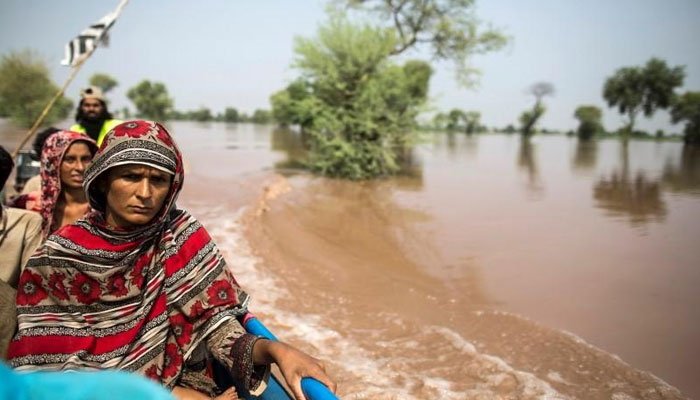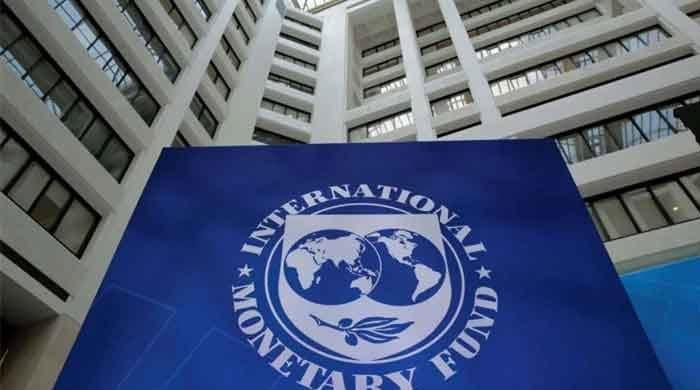The fight against climate change should transcend politics
Govts will come and go but climate change is here to stay. Any reversal will have not only ecological but also economic consequences for Pakistan
April 27, 2022

Pakistan remains on the frontlines of climate change. The torrid heatwave hitting major parts of the country this week is yet another stark reminder of the country’s growing vulnerability to climate change.
Last year, the German Watch Index ingloriously categorised Pakistan as one of the three countries that have continuously remained in the top 10 list of most climate impacted countries over the past decade — although to date it remains a very low contributor to the problem.
This climate injustice has been termed as one of the “gravest human rights violations in history” as it impacts millions of people residing in countries like Pakistan and suffering unavoidable impacts of climate with increasing frequency and ferocity, through no fault of theirs.
What, however, remains certain is that from the melting glaciers to the stressed mangroves, the country cannot afford to slow down its continuous struggle to cope with the consequences of climate change.
Watch: Solar Geoengineering – can it counter climate change?
Also, with this backdrop it is no small achievement that Pakistan has, over the past four years, managed to carve out a niche role at the global level as a nature leader — an effort that got unprecedented global recognition as Pakistan was termed as one of the three Global Forestry Champions by the UNEP, selected as one of the four Nature Leaders by the WEF, chosen to be one of the four pioneer countries in the Energy Transition Mechanism and honoured to host the World Environment Day 2022 to launch the global UN decade on ecosystem restoration.
This success did not happen by chance. It was meticulously planned and built upon four foundational pillars.
First, Pakistan’s climate vision was clear, crisp and understandably articulated. It was based on the philosophy of equipping the country to adapt to the growing climate impacts while ensuring that its development pathway does not add to the global problem but instead becomes a part of the solution.
This philosophy was translated into a two-pronged vision based on clean energy development and nature-based solutions and both driven by quantifiable targets to ensure that these green slogans are backed by an on-ground implementation which can be transparently monitored.
This model was always destined for success as long as its delivery got ensured. Subsequently, the target of shifting 60% of energy to clean zero-carbon energy by 2030 got translated into a flurry of new hydro projects replacing planned imported coal projects, the development of 10 new large dams with hydel energy got initiated, 1200 MW of wind projects stuck in red tape got started. Similarly, the country’s first Electric Vehicle policy was launched to meet the target of achieving 30% electric transport by 2030.
Read more: Billion tree tsunami not enough to prevent climate change
Along the second pillar of nature-based solutions, Pakistan truly came out as a global trailblazer with the successful completion of the Billion Tree Tsunami in Khyber Pakhtunkhwa (2014-18) and then following it up with the ambitious 10 Billion Tree Tsunami across Pakistan, from community-based regeneration of alpine forests to new plantation forests in riverine plains to enhancement of the mangroves along the coastline.
Also, under the Protected Areas Initiative, the country expanded its protected areas and increased the number of national parks from 30 to 45, developed park management plans, and laid grounds for launching the country’s first National Parks Service as well as new nature protection laws in the provinces.
Similarly, the Living Rivers and Recharge Pakistan initiatives are both nature-based interventions that are under design to ensure an ecological restoration of Pakistan’s riverine ecosystem and revive its degraded wetlands.
Second, this action-based vision was backed by the highest level of political commitment and resolve. The prime minister’s committee on climate change, chaired by the prime minister himself with all chief ministers and six relevant ministries present, was set up to take decisions and drive implementation related to climate change — all of which required complete and strong ownership as well as smooth inter-ministerial and inter-provincial coordination. This body managed to seamlessly provide both, to ensure not only timely implementation but also successful delivery.
Read more: Women more prone to danger due to effects of climate change, say experts
A key success factor was that this vision for climate security steered across political divisions with the government even reaching out and partnering with the opposition province — in spirit as well as with supportive funding.
Third, ensuring transparency was a key to ensuring global credibility. While the usual layers of provincial and federal level audit mechanisms were in place, the initiatives under the climate vision were subjected to an independent third party evaluation system. In particular, in the case of the 10 Billion Tree Tsunami, a consortium of WWF, IUCN and FAO were tasked to undertake a yearly performance review and audit. This focus on transparency was critical in attaining global acknowledgement.
Finally, the initiatives under the climate vision were kept people-centric with clear linkages on how benefits would accrue to the people. Whether it was the generation of green jobs through nurseries, forest protection or national park management or passing on cost savings through EV transition or home solar installations, a clear focus was to keep people’s benefits at the centre of all programmes.
The above pillars built up a credible green and climate-friendly edifice for Pakistan. These green credentials laid solid foundations for attracting not only global attention but also green financing through various channels. Pakistan successfully floated its first green bond of $500 million last year, which got oversubscribed six times by the market.
The first-ever blue carbon estimation study was completed last year through the World Bank which provides the basis for launching the country’s future blue bond flotation.
Read more: 560 catastrophic disasters every year by 2030, UN warns
Most innovatively, Pakistan was venturing into nature bonds linked to sovereign debt relaxation and also working on a scheme for nature policy-based lending (estimated at $1 billion) which, in partnership with the World Bank, remains in the final stages of development. Pakistan also became the only country to actually roll out a post-COVID ‘Green Stimulus’ package and secured financing to the tune of $120 million to follow it through for protecting nature and generating green jobs. All this happened due to the momentum built upon the four pillars mentioned above.
Given the country’s extreme vulnerability to climate change and its rising and inescapable impacts, the globally acknowledged pathway which is now also enshrined in our global obligations (NDC) needs to be continued as an irreversible trajectory. For Pakistan, climate compatible development is not a luxury but a necessity and this needs to transcend election cycles and sustain across the divergent political divides because
Governments will come and go but climate change is here to stay. Any reversal, or even slackness, will have not only ecological but also social and economic consequences for Pakistan. Conversely, consolidating this success can open up new vistas and opportunities by amplifying the country’s global green credentials painstakingly built up over the past four years.
The writer is a former minister of climate change and global vice-president of UNEP. He tweets @aminattock and can be reached at: [email protected]
Originally published in The News











